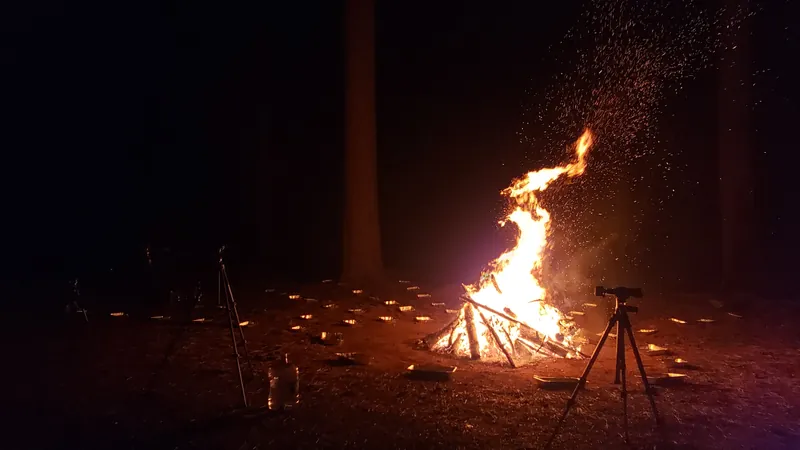
New Research Unveils Secrets of Wildfire Embers: The Unexpected Culprits of Spot Fires!
2024-10-10
Author: Li
As the destructive power of wildfires continues to wreak havoc in California's wildland-urban interface, scientists are turning their focus to the tiny, but mighty culprits behind the chaos: embers. These flaming particles are not only responsible for spreading fires but also for causing significant property damage and threats to human safety. In an innovative study conducted by researchers at the University of California, Irvine (UCI), new insights on ember dynamics are paving the way for better disaster preparedness and response in an age of intensifying climate change.
The groundbreaking research, published in the journal Physics of Fluids, took place amid the stunning backdrop of California's Sierra Nevada mountain range, specifically at the UC Berkeley Blodgett Forest Research Station. To comprehensively study these firebrands, the researchers created a realistic experimental environment by constructing a burn pile made of wood sourced from ponderosa pine and Douglas fir trees—materials commonly found in Sierra wildfires.
During nighttime trials, high-speed imaging instruments were utilized to capture the evolution and behavior of flames over a 20-minute timeframe. By employing a technique known as particle tracking velocimetry, scientists could closely monitor the trajectory of embers generated by the fire, revealing critical information about the flow dynamics and turbulence associated with their movement.
To analyze the firebrands further, the researchers strategically placed several sheet pans of water around the fire, which collected the embers as they were cast into the air. This clever setup enables detailed laboratory characterization of the embers in terms of size, shape, and density.
Tirtha Banerjee, a UCI associate professor of civil and environmental engineering and co-author of the study, emphasized the urgent need for understanding ember behavior in the context of increasing wildfire risks, stating, "Climate change is making wildfires larger and more complex, and our development patterns in the wildland-urban interface mean that these blazes are causing damage that’s directly impacting people living in these areas."
The researchers uncovered intriguing findings regarding the generation of embers, revealing that traditional computer models often underestimate the distances embers can travel. While most models assume a consistent fire intensity, this study showed that ember production occurs in unpredictable bursts, which can propel fiery debris great distances from the source. Banerjee noted, "Our team has made a major contribution by delving into the physics of firebrand propagation using advanced instruments."
Lead author Alec Petersen, a postdoctoral scholar at UCI, highlighted the significance of these rare but impactful ember bursts. "What gets ignored are events where bursts of relatively large embers are ejected simultaneously with strong, turbulent updrafts from the plume. These statistically rare events can loft embers capable of igniting new spot fires far beyond typical expectations."
By accounting for these sporadic bursts, the researchers hope their findings will enhance models used for predicting potential fire spread, ultimately improving risk calculations and response strategies. Given the number of embers wildfires produce—often billions per inferno—understanding ember dynamics could be critical for protecting lives and property.
With wildfires growing in intensity and frequency, this important research serves as a beacon of hope for improved forecasting and management strategies that could save communities from the catastrophic impacts of these natural disasters. As authorities look to bolster their wildfire response capabilities, the knowledge gleaned from this study may prove to be a game changer in safeguarding our landscapes and lives against fire’s relentless fury.





 Brasil (PT)
Brasil (PT)
 Canada (EN)
Canada (EN)
 Chile (ES)
Chile (ES)
 España (ES)
España (ES)
 France (FR)
France (FR)
 Hong Kong (EN)
Hong Kong (EN)
 Italia (IT)
Italia (IT)
 日本 (JA)
日本 (JA)
 Magyarország (HU)
Magyarország (HU)
 Norge (NO)
Norge (NO)
 Polska (PL)
Polska (PL)
 Schweiz (DE)
Schweiz (DE)
 Singapore (EN)
Singapore (EN)
 Sverige (SV)
Sverige (SV)
 Suomi (FI)
Suomi (FI)
 Türkiye (TR)
Türkiye (TR)